Matt Marble is not actually a doctor, but he is a candidate for the Phd in Music Composition at Princeton University who resides in New Jersey and Oregon. He also is a "sound-worker", an artist, and an enthusiastic dancer. Matt also curates the excellent Faces of Sound blog and produces experimental and popular musics. You know, musicing, trancing, languaging, the us'. He's currently working on his doctoral thesis on the music of Arthur Russell.
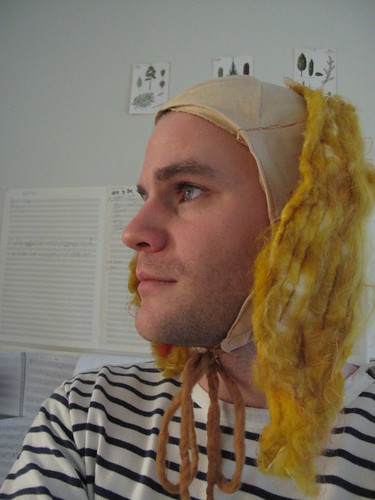
I asked Matt to give me some recommendations for books on sound several years ago, but never followed up. Instead of bugging him all over again, I asked him to write a little something for e-Blog.
Top 5 Books on Sound
Notations 21 - - - - - - - - - - - - - - - - - - - - - -
by Thersa Sauer
Since John Cage's Notations came out in 1969, there has been surprisingly little documentation of graphic scores. Theresa Sauer's book offers a glimpse into the contemporary marriage of eyes and ears. She features the classics (Yuji Takahashi, Earle Brown, David Rosenboom, and Karlheinz Stochhausen) through to contemporary sound artists (Steve Roden, Steven Vitiello, Marina Rosenfeld, and Slavek Kwi). The design shines on the visual and it is well done. If only there were an audio CD accompanying! But Thersa continues to champion this work, via her
Related: Agape (Alex Waterman); The Sound of Painting: Music in Modern Art (Karin Von Maur); Sound and the Visual Arts (Jean-Yves Bosseur); Scratch Music (Cornelius Cardew); Scores: An Anthology of New Music (Roger Johnson); Tools of Mind (Matt Marble)

Listening: An Introduction to the Perception of Auditory Events - - - - - - - - - - - - - -
by Stephen Handel
If you're interested in the science of sound (acoustics), of how we experience sound (psycho-acoustics and physiological anatomy), or the underpinnings of Western European music, then Stephen Handel's book is the most current (1989) comprehensive general-reader-friendly book out there. A great reference book if you're likely to reference such things.
Related: Microsound (Curtis Roads); Acoustic Communication (Barry Truax); Ecological Psychoacoustics (Marie-Reiss Jones); Auditory Imagery (Daniel Reisberg)
Water Sound Images: The Creative Music of the Universe - - - - - - - - - - - - - -
by Alexander Lauterwasser
We think of sound as invisible. But following in the footsteps of Ernst Chladni and Hans Jenny (inventor of the visually compelling Cymatics), Alexander Lauterwasser asks us to see how these vibrations give rise to incredibly beautiful and naturally pervasive forms. His studies vibrated water with Tibetan Monk chanting, Bach, Stockhausen, gongs, and other musical curios. He goes on to make connections between such forms and the developmental forms of plants, jellyfish, shells, clouds, and animal patterns. The book is simply beautiful. It works more as poetry and mytho-dream web than as any credible science, though it has a foot in that world. But artistically it offers an alternative way of listening to, looking at, and playing with sound.
Related: Cymatics (Jans Jenny); Harmonography: A Visual Guide to the Mathematics of Music (Anthony Ashton); The Book of Music and Nature (David Rothenberg); Rhythmanalysis (Henri Lefebvre)
Origins of Music - - - - - - - - - - - - - - - - - - - -
Edited by Nils Wallin et al.
You might be interested in this book if you're curious about... animal communication, animal music, the relationship between language and music, the evolutionary function of music. A broad anthology, featuring anthropologists, musicologists, biologists, archeologists, psychologists, neuroscientists, linguists, and composer François Bernard-Mâche. "What is music for, and why does every human culture have it? What are the universal features of music and musical behavior across cultures?"
Related: Healing Sounds of the Malaysian Rainforest (Marina Roseman); Sound and Sentiment (Steve Feld); Hearing Cultures (Veit Erlmann); Auditory Culture Reader (Michael Bull)

Deep Listeners: Music, Emotion, and Trancing - - - - - - - - - - - - - - - -
by Judith Becker
Borrowing Pauline Oliveros' notion of Deep Listening, Ethnomusicologist Judith Becker offers one of the most intriguing plunges into global trance musics. With a gentle empericism Becker globally connects the dots between sounds, actions, emotions, and our heightened psycho-physical experiences of music. She draws much from Empirical philosophy (William James), post-structuralist French sociology (Pierre Bordieur), and contemporary cognitive science, but in a language that leaves the door open and stays compelling. The accompanying c.d. is just awesome, featuring: Sri Lankan ritual music, the Italian Tarantelle, Nusrat Fateh Ali Khan's trance practice, the Hindi Gazal, Balinese witch ritual music, Sacred Harp singing, Pentecostal gospel music, and South Sulawesi ceremonial music.
Related: Music and Trance: A Theory of the Relations Between Music and Possession (Gilbert Rouget); Rhythm, Music, and the Brain (Michael Thaut); Sonic Warfare: Sound, Affect, and the Ecology of Fear (Steve Goodman); Unlocking the Groove (Mark Butler); African Rhythm (Kofi Agawu)




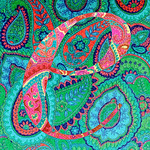
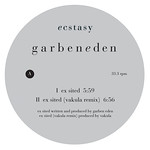
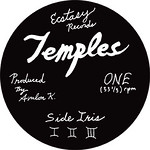
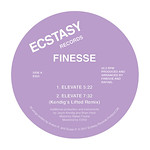

yess!
ReplyDelete